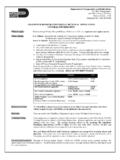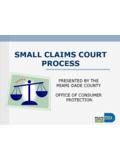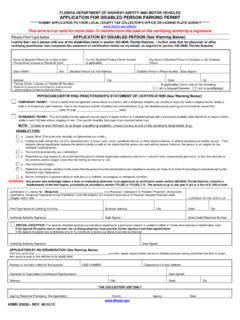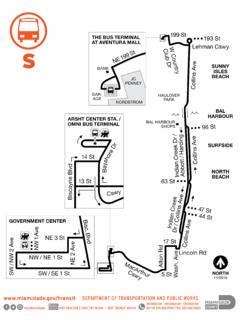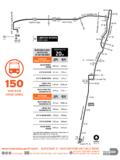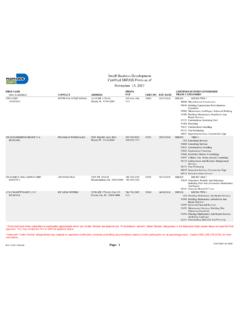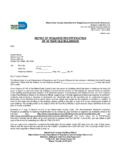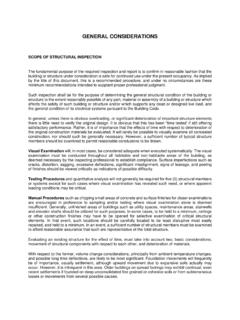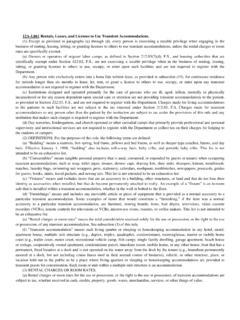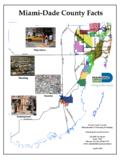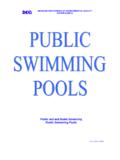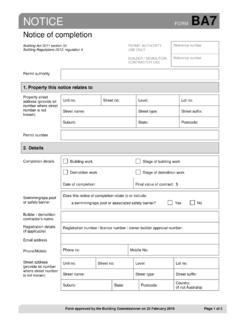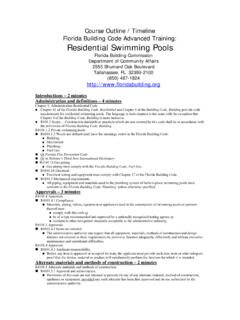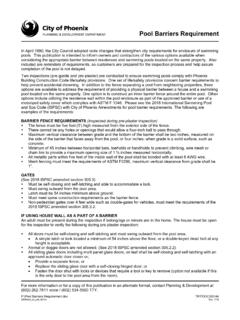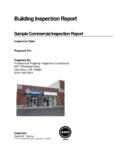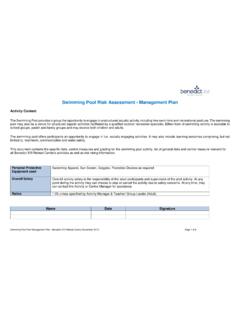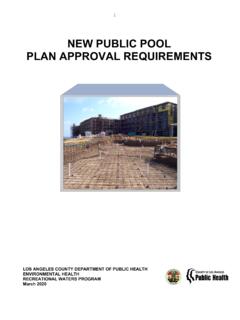Transcription of Pool Barriers - Miami-Dade County
1 Florida Building Code swimming Pool Barrier byThe Board and CodeAdministration DivisionSenate Bill 86 Senate Bill 86 is also known as the Preston de Ibern/McKenzie Merriam Residential swimming Pool Safety Act Created Chapter 515 of the Florida Statutes. This is how it all started. It became effective October 1, Statutes 515 findings and Legislature finds that drowning is the leading cause of death of young childrenin this state and is also a significant cause of death for medically frail elderly personsin this state, that constant adult supervision is the key to accomplishing the objective of reducing the number of submersion incidents, and that when lapses in supervision occur a pool safety feature designed to deny, delay, or detect unsupervised entry to the swimming pool, spa, or hot tub will reduce drowning and near-drowning incidents. SpaHot tubsOn-ground poolsAbovegroundIn-groundFixed-in-place wading pools. FBC/Building Chapter 4 Section 454 swimming POOL.
2 Any structure intended for swimming , recreational bathing or wading that contains water over 24 inches (610 mm) deep. This includes in-ground, aboveground and on-ground pools; hot tubs; spas and fixed-in-place wading BUILDING CODE/BUILDING-CHAPTER 4 SECTION PRIVATE swimming POOLS Section Definitions: BARRIER. A fence, dwelling wall or nondwelling wall or any combination thereof which completely surrounds the swimming pool and obstructs access to the swimming pool, especially access from the residence or from the yard outside the BUILDING CODE/RESIDENTIALCHAPTER 45 PRIVATE swimming POOLS Section Definitions: BARRIER. A fence, dwelling wall or nondwelling wall or any combination thereof which completely surrounds the swimming pool and obstructs access to the swimming pool, especially access from the residence or from the yard outside the barrier. swimming POOL, PRIVATE. Any structure, located in a residential area, that is intended for swimming or recreational bathing and contains water over 24 inches (610 mm)deep including but not limited to inground, above-ground, and onground swimming pools, hot tubs, and nonportable spasSWIMMING POOL, INDOOR.
3 A swimming pool which is totally contained within a structure and surrounded on all four sides by walls of said POOL, OUTDOOR. Any swimming pool which is not an indoor pool. swimming POOL, RESIDENTIAL. See swimming pool, private. Residential swimming barrier requirement. Residential swimming pools shall comply with through :A swimming pool with an approved safety pool cover complying with ASTM F BUILDING CODE /RESIDENTIAL (FBC/R) Section Outdoor swimming pools. ( Section ) Outdoor swimming pools shall be provided with a barrier complying with Sections through top of the barrier shall be at least 48 inches (1219 mm) above grade, measured on the side of the barrier which faces away from the swimming maximum vertical clearance between grade and the bottom of the barrier shall be 2 inches (5mm) measured on the side of the barrier which faces away from the swimming the top of the pool structure is abovegrade, the barrier may be at ground level or Mounted on top of the pool structure.
4 Wherethe maximum vertical clearance between the top of the pool structure and the bottom of thebarrier shall be 4 inches(102 mm). The barrier may not have any gaps, openings, indentations, protrusions, or structural components that could allow a young child to crawl under, squeeze through, or climb over the barrier as herein described below. One end of a removable child barrier shall not be removable without the aid of tools. Openings in any barrier shall not allow passage of a 4-inchdiameter (102 mm) sphere. Solid Barriers which do not have openings shall not contain indentations or protrusions except for normal construction tolerances and tooled masonry joints. Where the barrier is composed of horizontal and vertical members and the distance between the tops of the horizontal members is less than 45 inches (1143 mm), the horizontal members shall be located on the swimming pool side of the fence. Spacing between vertical members shall not exceed 1 inches (44 mm) in width.
5 Where there are decorative cutouts within vertical members, spacing within the cutouts shall not exceed 1 3/4 inches (44 mm) in width. Where the barrier is composed of horizontal and vertical members and the distance between the tops of the horizontal members is 45 inches (1143 mm) or more, spacing between vertical members shall not exceed 4 inches (102 mm). Where there are decorative cutouts within vertical members, spacing within the cutouts shall not exceed 1 3/4 inches (44 mm) in width. Maximum mesh size for chain link fences shall be a 2 1/4 inch square (57 mm) unless the fence is provided with slats fastened at the top or bottom which reduce the openings to no more than 1 inches (44 mm). Where the barrier is composed of diagonal members, the maximum opening formed by the diagonal members shall be no more than 1 3/4 inches (44mm). Access gates, when provided, shall be self-closing and shall comply with the requirements of Sections through and shall be equipped with a self-latching locking device located on the pool side of the gate.
6 Where the device release is located no less than 54 inches (1372 mm) from the bottom of the gate, the device release mechanism may be located on either side of the gate and so placed that it cannot be reached by a young child over the top or through any opening or gap from the outside. Gates that provide access to the swimming pool must open outward away from the pool. The gates and barrier shall have no opening greater than 1/2 inch ( mm) within 18 inches (457 mm) of the release mechanismSelf-Closers&Self-LatchesSelf-C losers&Self-LatchesSelf-Closers& Where a wall of a dwelling serves as part of the barrier, one of the following shall apply:1. All doors and windows providing direct access from the home to the pool shall be equipped with an exit alarm complying with UL 2017 that has a minimum sound pressure rating of 85 dBAat 10 feet (3048 mm). Any deactivation switch shall be located at least 54 inches (1372 mm) above the threshold of the access.
7 Separate alarms are not required for each door or window if sensors wired to a central alarm sound when contact is broken at any opening. Exceptions: (Next Slide) Where a wall of a dwelling serves as part of the barrier, one of the following shall apply: Exceptions: a. Screened or protected windows having a bottom sill height of 48 inches (1219mm) or more measured from the interior finished floor at the pool access level. b. Windows facing the pool on floor above the first story. c. Screened or protected pass-through kitchen windows 42 inches (1067 mm) or higher with a counter beneath. 2. All doors providing direct access from the home to the pool must be equipped with a self-closing, self-latching device with positive mechanical latching/locking installed a minimum of 54 inches (1372 mm) above the threshold, which is approved by the authority having Supplement to the 5th Edition (2014) Florida Building Code HB535/SB1602 House Bill 535 and Senate Bill 1602 made the following changes to the existing law for Residential Pool language was added to 5thEdition of the Florida Building Code (2014) / Residential Section , which includes surface motion, pressure, sonar, laser, and infrared alarms for the residential swimming date July 1, Where a wall of a dwelling serves as part of the barrier, one of the following shall apply: 3.
8 A swimming pool alarm that, when placed in a pool, sounds an alarm upon detection of an accidental or unauthorized entrance into the water. Such pool alarm must meet and be independently certified to ASTM Standard F2208, titled "Standard Safety Specification for Residential Pool Alarms," which includes surface motion, pressure, sonar, laser, and infrared alarms.(continue on next slide) Where a wall of a dwelling serves as part of the barrier, one of the following shall apply: 3. cont purposes of this paragraph, the term " swimming pool alarm" does not include any swimming protection alarm device designed for individual use, such as an alarm attached to a child that sounds when the child exceeds a certain distance or becomes submerged in Where a wall of a dwelling serves as part of the barrier, one of the following shall apply: Where an above-ground pool structure is used as a barrier or where the barrier is mounted on top of the pool structure, and the means of access is a ladder or steps, the ladder or steps either shall be capable of being secured, locked or removed to prevent access, or the ladder or steps shall be surrounded by a barrier which meets the requirements of Sections through and Sections through When the ladder or steps are secured, locked or removed, any opening created shall not allow the passage of a 4-inchdiameter (102 mm) sphere.
9 Standard screen enclosures which meet the requirements of Section may be utilized as part, or all, of the barrier and shall be considered a nondwelling wall. Removable child Barriers shall have one end of the barrier non-removable without the aid of closerScreen Enclosure The barrier must be placed around the perimeter of the pool and must be separate from any fence, wall, or other enclosure surrounding the yard unless the fence, wall, or other enclosure or portion thereof is situated on the perimeter of the pool, is being used as part of the barrier, and meets the barrier requirements of this section Removable child Barriers must be placed sufficiently away from the water s edge to prevent a young child or medically frail elderly person who may manage to penetrate the barrier from immediately falling into the water. Sufficiently away from the water s edge shall mean no less than 20 inches (508 mm) from the barrier to the water s edge.
10 Dwelling or nondwelling walls including screen enclosures, when used as part or all of the barrier and meeting the other barrier requirements, may be as close to the water s edge as permitted by this code. A wall of a dwelling may serve as part of the barrier if it does not contain any door or window that opens to provide direct access from the home to the swimming Adjacent waterways. Permanent natural or permanent man-made features such as bulkheads, canals, lakes, navigable waterways, etc., adjacent to a public or private swimming pool or spa may be permitted as a barrier when approved by the authority having jurisdiction. When evaluating such barrier features, the authority may perform on-site inspections and review evidence such as surveys, aerial photographs, water management agency standards and specifications, and any other similar documentation to verify, at a minimum, the following:1. The barrier feature is not subject to natural changes, deviations, or alterations and is capable of providing an equivalent level of protection as that provided by the code2.
